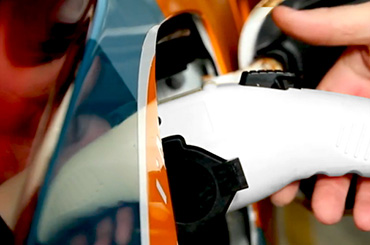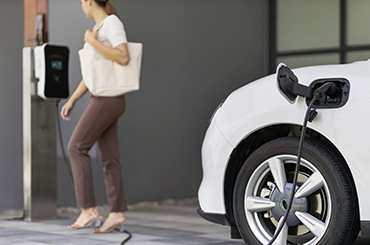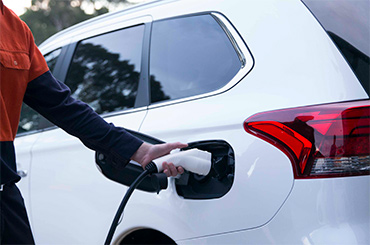
Electric Vehicles can provide more than just a mode of transportation – they can be a part of your overall home energy management through vehicle-to-grid or V2G technology.
Electric vehicles are transforming Australia’s energy network by increasing the amount of energy storage connected to the electricity grid. V2G technology can allow for that stored energy to be used as part of your home energy management and assist the network during times of peak power demand.
With the use of a bidirectional charger, EVs can be transformed from just a vehicle into a part of the future energy solution. A bidirectional charger is capable of two-way charging, allowing the exchange of energy between your EV, your home and the grid.
Vehicle-to-grid (V2G)
Some electric vehicles are equipped with V2G technology which enables electricity to be exported from the battery to the electricity network using a bidirectional charger. It means that V2G-capable electric vehicles owners can use their car battery to capture excess solar PV generation, use the battery to run the house and even export excess electricity to the grid.
But it’s not the only option for using your EV battery at home. Bidirectional charging also provides for vehicle-to-home (V2H) and vehicle-to-load (V2L).
Vehicle-to-home (V2H)
V2H is similar to V2G except that the power from the EV goes directly to home instead of through the grid. That means it acts more like a solar battery, and in some cases, can run your home during a power outage.
Vehicle-to-load (V2L)
V2L works as it sounds. By using an adaptor, you can plug appliances directly into your EV battery. It works like a camp battery, allowing you to run a fridge or charge your laptop from your car.
Vehicle-to-everything (V2X)
V2X is an umbrella term for the communication between a vehicle and any entity that may affect, or be affected by, the vehicle.
In Australia, there are varying degrees of EVs with V2G, V2H and V2L capabilities and the required technology available. At this stage, there is limited availability of V2G chargers that are compatible with the current Australian technical and regulatory requirements for grid connection via inverters*.
We are working to facilitate and support transport electrification within our communities and enable the potential for vehicle-to-grid capability into the future.
To have your say on Essential Energy's current and future plans, visit Essential Engagement, as we value feedback and input from our customers when considering future opportunities.
* Standards Australia AS/NZS 4777.2 specifies the expected performance and behaviour of inverters at low voltages (such as households or small-scale commercial) and the necessary tests for compliance.



